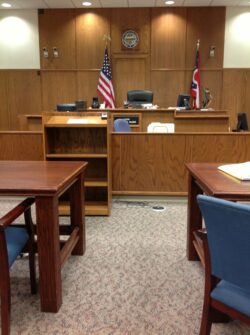Crash Fault & Settlements Unveiled
In the intricate dance of rear-end collision settlements, understanding the nuances of crash fault determination and the consequential financial settlements is paramount. The presumption that the trailing driver is at fault due to inadequate following distance is a common starting point, yet this is merely the surface of a complex legal and insurance labyrinth. The interplay of comparative negligence, insurance policy intricacies, and legal strategies unfolds a multidimensional challenge for victims seeking compensation. As we navigate these murky waters, the question arises: how does one effectively maneuver through the legal and insurance frameworks to guarantee fair settlement? This exploration seeks to unravel these complexities, offering clarity to those entangled in the aftermath of rear-end collisions.
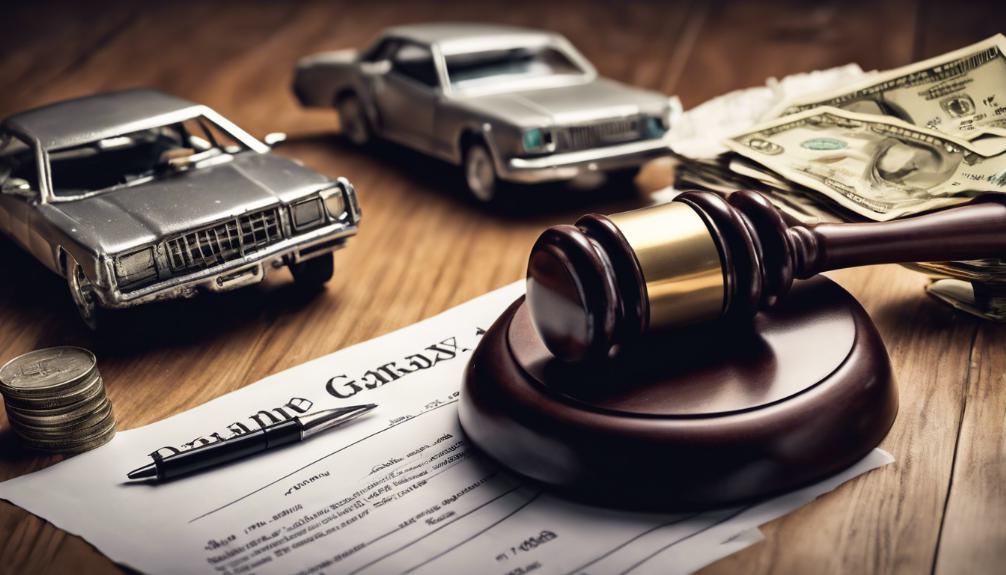
Key Takeaways
- The driver of the rear vehicle is typically at fault in rear-end collisions.
- Rear-end accidents often lead to significant settlements covering medical bills, lost wages, and pain and suffering.
- Comparative negligence rules can allow partial compensation even if the victim is partly at fault.
- Consulting with an experienced attorney is crucial for navigating insurance settlements and potential lawsuits.
Rear-End Collision Compensation
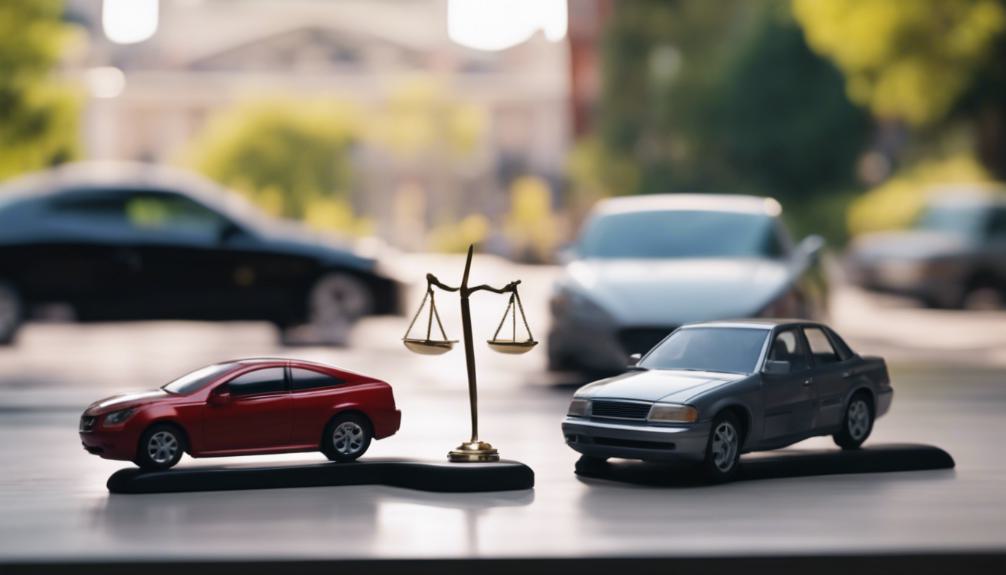
Understanding the components of rear-end collision compensation is important for victims seeking to recover losses incurred from such incidents. This compensation encompasses several categories, including medical expenses, lost wages due to personal injury, pain and suffering, and property damage. For instance, the all-inclusive costs of a rear-end accident at a signalized intersection averaged $26,700 in 2018, highlighting the significant financial impact these incidents can have. Common injuries from rear-end accidents, such as whiplash, back injuries, and spinal issues, often necessitate extensive medical treatment. Victims should meticulously document all related expenses and consult with an experienced attorney. An attorney can provide invaluable assistance by negotiating with insurance companies and, if necessary, pursuing a civil lawsuit to secure fair compensation.
Fault Determination Techniques
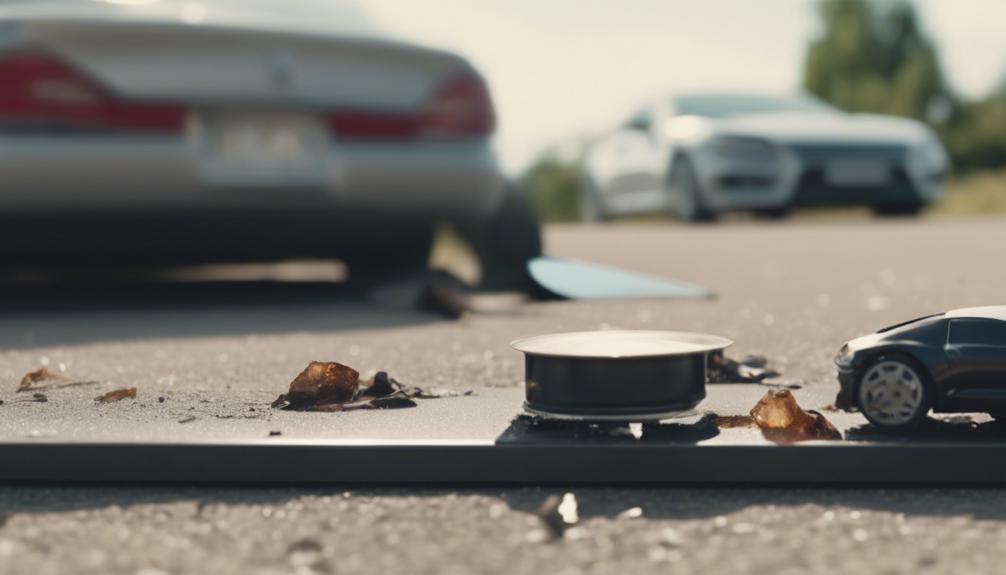
After exploring the various components of rear-end collision compensation, it becomes imperative to examine the methodologies employed in determining fault in such incidents. Typically, the onus is on the driver of the rear vehicle, premised on the expectation of maintaining a safe following distance. However, this is not an absolute rule. Investigation techniques include analyzing traffic camera footage, if available, eyewitness statements, and examining the damage pattern on vehicles involved. Such analyses help in reconstructing the incident to ascertain deviations from traffic laws and safe driving practices. Additionally, in instances where fault is disputable, specialized accident reconstruction experts may be consulted to provide a more nuanced understanding of the events leading up to the collision, thereby helping in the fair adjudication of fault and liability.
Understanding Negligence

Negligence, as a legal concept, involves the failure to exercise a level of care that a reasonably prudent person would under similar circumstances. In the context of rear-end collisions, this principle is paramount for establishing fault and liability. Drivers are expected to adhere to road safety rules, including maintaining a safe distance from the vehicle ahead to prevent accidents. When a driver fails to do so and causes a rear-end collision, they may be deemed vital. This negligence forms the basis for legal action and compensation claims. Victims can seek reparations for damages such as medical expenses, lost wages, and pain and suffering. Understanding negligence is essential for both preventing rear-end collisions and addressing their aftermath in a legal framework.
Comparative Vs. Contributory Negligence
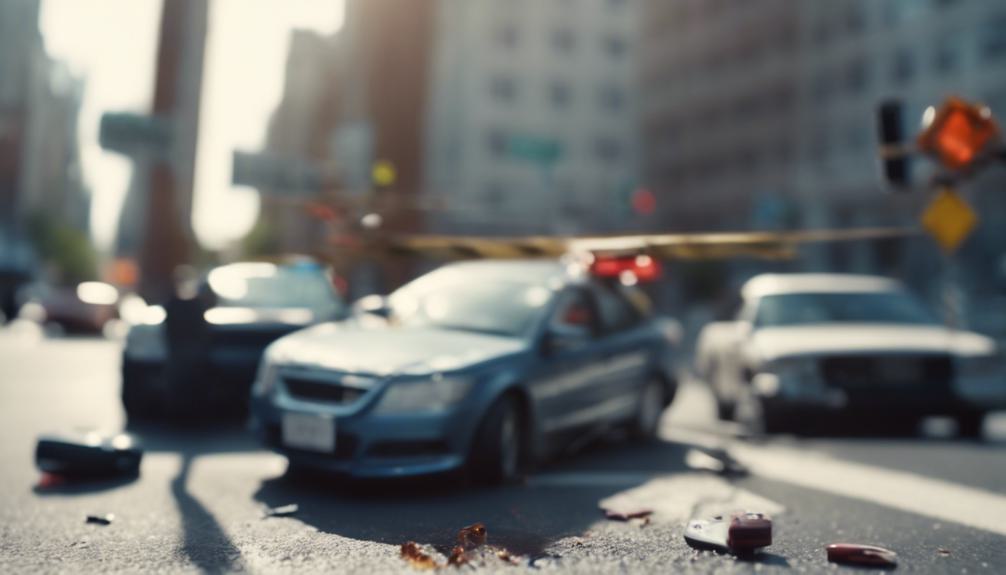
In the domain of rear-end collisions, distinguishing between comparative and contributory negligence is essential for determining liability and compensation. Comparative negligence acknowledges that multiple parties can be at fault to varying degrees. For example, if a driver is found to be 20% responsible for an accident, they can still recover 80% of the total damages. This system encourages fair compensation based on each party's level of fault. Conversely, contributory negligence is more stringent. If a party is found to have any degree of fault, even minimal, they may be barred from recovering any compensation. This stark difference underscores the importance of understanding the specific negligence laws within the jurisdiction where the accident occurred, as they greatly influence the outcome of settlements and litigations.
Insurance Settlement Dynamics

Understanding the nuances between comparative and contributory negligence plays a significant role in maneuvering the complex landscape of insurance settlement dynamics for rear-end collision cases. These legal frameworks dictate how fault is allocated and, consequently, how compensation is determined and distributed among the parties involved. Insurance companies meticulously assess the details of each case, calculating settlement offers based on their fault determination. This process involves reviewing evidence such as police reports, witness statements, and traffic laws relevant to the incident. The settlement amounts cover various damages, including medical expenses, lost wages, and property damage, reflecting the severity of the accident and the extent of the victim's injuries. Successfully handling these dynamics requires a thorough understanding of both legal principles and the specifics of the accident case at hand.
Legal Advice for Victims
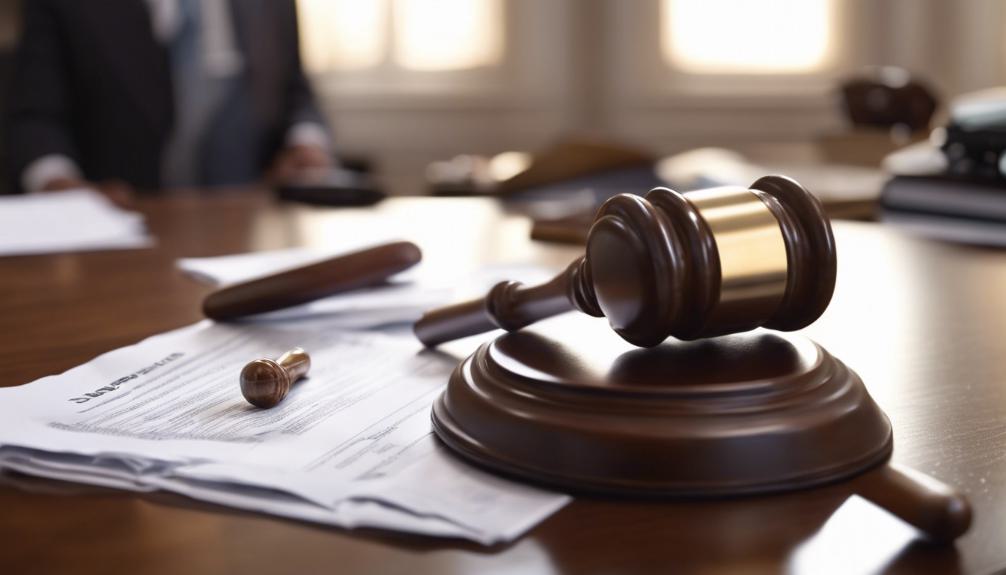
Victims of rear-end collisions should promptly seek legal counsel to explore their rights and potential for compensation. An experienced attorney can provide invaluable guidance on the complexities of rear-end collision settlements, including the assessment of medical bills, lost wages, pain and suffering, and property damage. Understanding the nuances of fault and negligence is important, as these factors heavily influence the outcome of a claim. Legal experts can help victims navigate the process of establishing fault, particularly in cases where comparative negligence may apply. By reviewing specific settlement examples and leveraging legal expertise, victims can enhance their chances of securing a fair and just compensation. It is important to act swiftly to make sure that all legal options are thoroughly explored.
Negotiating With Insurers
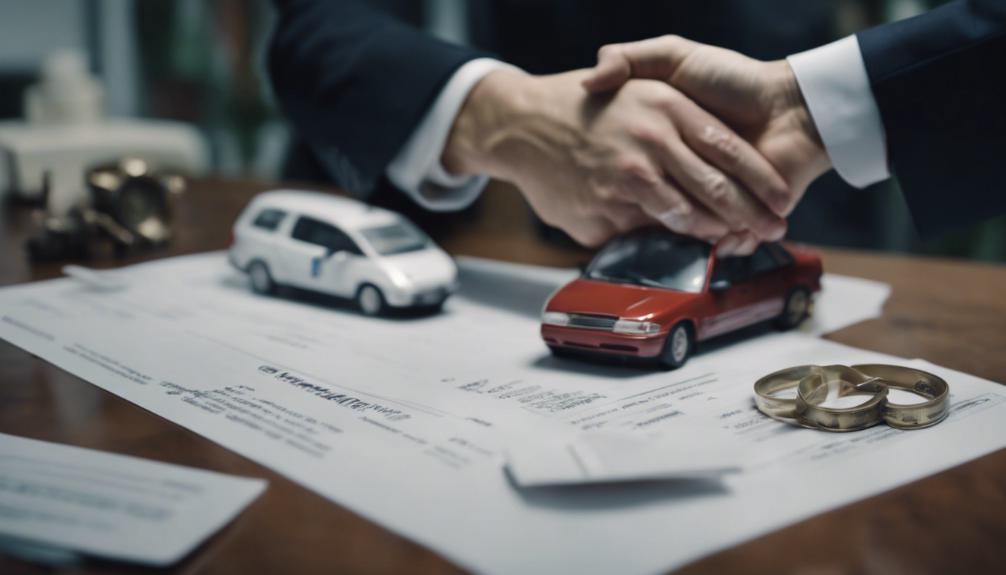
Handling the complexities of insurance negotiations after a rear-end collision requires strategic communication and a clear understanding of one's rights and the details of the accident. It's important to meticulously document all aspects of the incident, including gathering evidence of damages and injuries. Communicating with insurers involves presenting a detailed claim that encompasses medical expenses, lost wages, pain and suffering, and property damage. Knowledge of comparative negligence laws is essential, as these can greatly impact the settlement offer. Engaging in negotiations with an insurer demands patience and persistence, with a readiness to substantiate the claim through detailed documentation and a logical argument. This approach ensures that victims receive fair compensation that reflects the true extent of their losses and suffering.
Civil Litigation Process
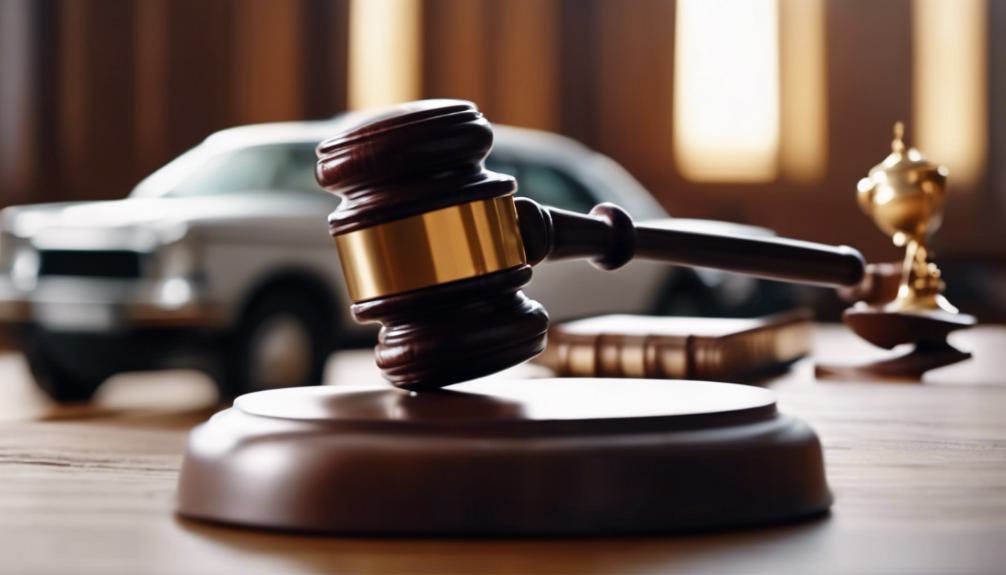
The civil litigation process commences when a rear-end collision victim decides to pursue legal action against the party deemed responsible for the accident. This initiation is marked by the filing of a complaint, which outlines the plaintiff's allegations and the damages sought. The defendant then has the opportunity to respond, setting the stage for pre-trial procedures such as discovery, where both parties exchange evidence and depose witnesses. Settlement discussions may occur at any point, aiming to resolve the dispute without trial. If these efforts fail, the case proceeds to trial, where a judge or jury examines the evidence, determines liability, and, if applicable, awards damages. Throughout this process, the principles of negligence and comparative negligence play pivotal roles in establishing fault and determining compensation.
Frequently Asked Questions
How Does the Presence of Dashcam Footage Impact the Process of Determining Fault in a Rear-End Collision?
The presence of dashcam footage greatly enhances the accuracy of fault determination in rear-end collisions by providing objective evidence of the events leading up to the accident, potentially influencing the outcome of settlement negotiations.
In What Ways Can Advancements in Vehicle Technology, Like Automatic Braking Systems, Affect Liability and Fault in Rear-End Accidents?
Advancements in vehicle technology, such as automatic braking systems, could have a major impact on liability and fault determinations in rear-end accidents by potentially reducing the responsibility of drivers who have these systems installed in their vehicles.
How Does the Involvement of a Commercial Vehicle (E.G., a Delivery Truck) in a Rear-End Collision Alter the Approach to Compensation and Fault Determination?
The involvement of a commercial vehicle in a rear-end collision necessitates a nuanced approach to compensation and fault determination, often involving corporate liability considerations and potential complexities in insurance claims and legal responsibilities.
What Role Does Witness Testimony Play in Rear-End Collision Cases Where the Fault Is Disputed Between the Parties Involved?
In rear-end collision cases with disputed fault, witness testimony is important. It provides independent accounts of the incident, helping to establish fault accurately and influencing the outcome of settlements or legal proceedings greatly.
How Are Rear-End Collision Settlements Affected When the Accident Exacerbates Pre-Existing Medical Conditions of the Victim?
Rear-end collision settlements involving exacerbation of pre-existing medical conditions generally result in higher compensation. This accounts for the additional medical treatment required and the potential for increased pain and suffering experienced by the victim.
Conclusion
To sum up, rear-end collision settlements encompass a complex interplay of legal principles and insurance practices. Fault determination is critical, often hinging on the doctrine of negligence and its variants, comparative and contributory negligence. Understanding these concepts is crucial for victims seeking compensation. Insurance settlement dynamics and legal strategies, including negotiation and litigation, play pivotal roles in securing fair outcomes. Victims are advised to seek legal counsel to navigate these processes effectively, ensuring that their rights and interests are adequately protected and compensation is justly awarded.

This post has been generated by AI and was not reviewed by editors. This is Not legal advice. Please consult with an attorney.



